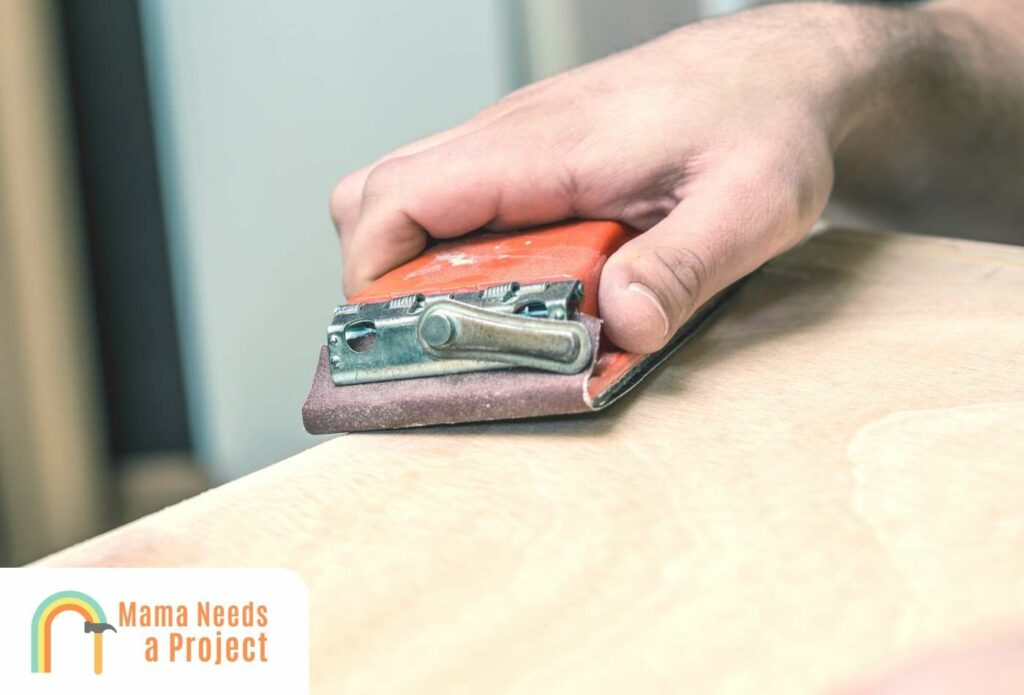How to Dull a Glossy Finish (3 EASY Methods in 2024)
If you’re an experienced woodworker like me, you’ve probably wondered how to dull a glossy finish at least once.
The first time I ever wanted to dull a glossy finish was after I purchased an antique end table from my close friend. It was a great table, but you could tell it was from decades ago. From this experience, I learned that it can be a bit challenging at first, but it becomes a lot easier once you get the hang of it.
Below, I cover three methods you can use to dull a glossy finish quickly and easily. Let’s dig in!
Materials Needed
Before you start dulling, you need to make sure you have the right tools and materials.
It’s best to gather everything you need before you start working, as this way you won’t have to stop in the middle of what you’re doing to find what you don’t have.
Here’s what you’ll need.
- Wet/dry sandpaper or sanding blocks (220-1200 grit)
- A paint brush (if you’re not spraying the finish on)
- An orbital sander
- Mineral spirits
- Polishing pads
- Coarse polishing compound
- Steel wool
- Finish (matte, satin or semi-gloss)
How to Dull a Glossy Finish by Sanding

If dulling a glossy finish is your mission, the first method you should try is the sandpaper method. And if you don’t like the results you get from sanding, you can try another method.
Remember that when you use coarse sandpaper, you’re going to take off the finish with each motion, so you should be aware of how much pressure you’re applying when sanding.
Should you sand a thin finish too hard, you may take all the finish off in some places, and this is definitely a problem that’s best avoided.
To ensure you don’t make any mistakes while sanding, start slow and check your progress frequently; this way you’ll know right away when the right level of dullness has been reached.
1. Sanding
To begin, grab your sandpaper; the ideal grit at this stage is 200-320 grit.
But before you start sanding, rub some soapy water or mineral spirits on the glossy surface; doing this will make sanding easier and ensure you remove any dust, dirt, etc. that’s accumulated on the surface.
Once you’ve done a bit of sanding, stop, wipe the surface down, and check your progress. Cleaning the surface post sanding is incredibly important, as if you don’t do this you won’t be able to gauge how the surface looks.
If you’re dealing with a thick finish, skip the 200-320 grit and start with 400 grit instead; use less mineral spirits too. Fine steel wool could be used at this point too.
Still not satisfied with how the surface looks? Move up to higher grit sandpaper (600-grit) and follow the same process. After the 600-grit, if the finish looks cloudier and you’re satisfied with this result, consider the task complete.
And if you think the surface is now too dull, move up to 800-grit. Sanding with this will restore some glossiness. Still too dull? Grab the 1200-grit. If even that’s not enough, it’s time to move on to polishing.
2. Polishing
If the surface now has a lot of swirl marks—because you were sanding in a circular motion—and you’ve determined it’s too dull, grab some polishing compound.
Apply the compound to a buffing pad and then attach the pad to your orbital sander. Now turn the sander on and start to polish.
When you first start sanding, don’t apply any pressure, as the course polishing compound and orbital sander will do the work for you.
After you’ve done enough buffing, grab a soft cloth, dip it in soapy water, and then wash the surface. If you want to bring back more gloss, repeat the buffing process, except this time use an even finer polishing compound.
Method Results
Trial and error is inevitable when you opt to dull a surface using the sanding method. Again, this is why you should take your time when sanding and polishing.
It’s true that a matte finish can be hard to achieve, but if you get the sanding down just right, then eventually you’ll have a matte finish instead of the gloss finish.
Need some help? Check out the video below!
How to Dull a Glossy Finish by Refinishing
If you’re not satisfied with the results you got from using sandpaper and polishing compound, it’s not the end of the world. There’s another method you can try right after this to get the dull finish you’re looking for.
First things first—remove the polishing compound that was applied earlier. Grab some naphtha or another solvent to accomplish this. Then go back to the stand paper you started with, the 220 grit, and rough up the surface.
After it’s been sufficiently roughed-up, apply lacquer.
Now it’s time to apply the finish. Before you do this, make sure the surface is totally clean and dry. Go over it with soap and water or mineral spirits and let it dry.
Once dry, spray a matte, satin, or semi-gloss finish on. If you apply a light coat that dries quick first, you should know in under a half hour how applying more coats is going to look.
If you like what you see, put on one or two more coats and then allow the finish to dry and cure.
After the finish has had days to cure, assess it and determine if it’s dull enough for you. If it is, congratulations!
How Do You Make Polyurethane Finish Less Shiny?
If you’ve been working with polyurethane for years like I have, you know the vast majority of polyurethanes out there dry and cure to be glossy.
But how you apply the polyurethane in large part determines how glossy it will be, which means if you want to make it less shiny, this will have to be accomplished during the application process.
That said, you can dull an already glossy polyurethane surface, and it’s pretty simple to do. All you need is some sandpaper with a high grit count (400+).
First, clean the surface with mineral spirits or soapy water. Once dry, lightly sand the surface slowly, checking the results of your sanding periodically.
Eventually, you should have a uniform, duller polyurethane finish. If you don’t have this, repeat the same sanding process with 300-grit sandpaper. Still not dull enough? Break out the 220-grit. If even that doesn’t do it, move on to the next step.
Removing Old Polyurethane to Apply Matte Polyurethane
The more efficient way to take the shine out of polyurethane is to completely remove the finish and then reapply a few coats of matte, satin, or semi-gloss polyurethane, all of which are usually water-based.
One trick that I’ve perfected over the years is I apply a couple coats of oil-based polyurethane and then add a topcoat of water-based matte, satin, or semi gloss polyurethane.
Doing things this way, I get the durability that multiple coats of oil-based provides with the dull look that only a light coat of specially designed water-based polyurethane can deliver.
But I will say, achieving a dull finish this way takes a lot of trial and error, and you could mess up and significantly elongate the process if you don’t get the right mix of polyurethanes.
Also, you have to remember that you’re applying oil-based polyurethane, so this doesn’t really work on lighter woods, as this polyurethane tinges the wood—dulling the surface would make this less noticeable but not hide it completely.
How to Dull Glossy Polyurethane
You can make a glossy polyurethane less glossy by adding hardening oil like tung oil to it.
Once you have a good mix, apply the polyurethane to the surface you want finished. After it’s dry, give it a good sanding with some 220-grit sandpaper.
Now apply a second coat. Again, wait for it to dry before giving it a light sand.
Finally, add a third coat. This time, however, once the coat is dry, sand with a finer, 400-grit sandpaper. And to ensure this sandpaper cuts smoother, apply a little bit of water to it.
Next—and this is the part that makes all the difference—pour some tung oil, teak oil, or boiled linseed oil onto a microfiber cloth and then lightly rub it into the finish, going with the grain as you do. Rub until there’s only a small amount of oil left on the wood.
Now let the wood dry overnight. The next day, go over it with a clean microfiber cloth.
FAQs
How do you dull the shine of polyurethane?
To make polyurethane less shiny, you’ll need sandpaper, mineral spirits, and a few clean cloths. It’s really as simple as going over the polyurethane with sandpaper, cleaning it afterward, and repeating this process until the surface is sufficiently dull. Sandpaper with a low grit count is your best bet if you want a dull finish.
Can you change the sheen of polyurethane?
Yes, you can change the sheen of polyurethane. You can do this by sanding it after it’s dried and cured, or you can change its makeup before applying it. I recommend the latter.
Final Thoughts on Ways to Dull a Glossy Finish
If you’re wondering how to dull a glossy finish, it can be easier than you might think.
There are a few different ways to dull a finish. You could use a variety of sandpapers in combination with polishing compound, or you could take the finish off and apply a matte, satin, or semi-gloss finish.
While this isn’t always possible, I prefer taking the original finish off and then applying a new one because I think this gives you more control. Having to work with a pre-existing finish limits your options, whereas my way you create the finish and perfect it from there.

